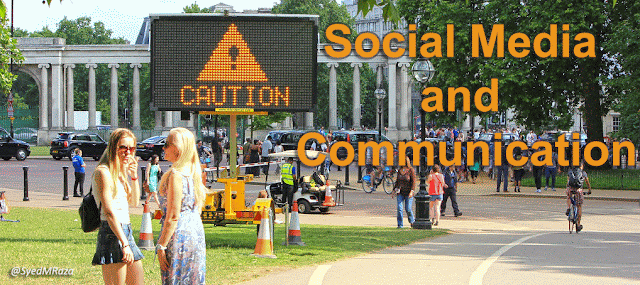Tweet
BASIC SOCIAL MEDIA THOERIES: The Communication Perspctive
So, how do you read/perceive social media? Is it always and all about Facebook, twitter and a few more platforms enabling us to share the pictures, thoughts and s***s from the squares we eat and play? Is it always about the cynosures among us? Well, simply put, it is not; it is way bigger than that. Social media is (now) one of the strongest and fastest ways to communicate; be it conversational or even in trance.
BASIC SOCIAL MEDIA THOERIES: The Communication Perspctive
So, how do you read/perceive social media? Is it always and all about Facebook, twitter and a few more platforms enabling us to share the pictures, thoughts and s***s from the squares we eat and play? Is it always about the cynosures among us? Well, simply put, it is not; it is way bigger than that. Social media is (now) one of the strongest and fastest ways to communicate; be it conversational or even in trance.
Social media is a part of the much bigger digital media
landscape beyond facebook, instagram and twitter. Unfortunately a larger part
of the users and entertained audiences, in a clumsy state of understanding, has
accepted social media to be limited to the social networking platforms. As a
teacher/student of communication, I portray social media as an inseparable part
of the new era of communication, in its all forms.
Had Wilbur Schramm, the founder of the field of communication
studies, been alive today he would have defined social media something as a
mechanism through which the human relationships in this century exist and
develop, mostly online. Somehow, his definition of communication (from which
the previous line has been curated) which stresses on the human relations and
the sharing of experiences on the basis of commonness would also had defined
social media acutely.
With its biggest contribution of the sender and receiver experience
concept, Schramm’s model stresses on communication as a continuous process of
messages and feedback, allowing interaction. This point from Schramm’s model
totally dwells into the functioning of social media. Social media, as it is
experienced, flows within the perimeter of the message so meant, prepared, sent,
received and finally interpreted. This interpretation further becomes the
expression of either acceptance/appraisal or refusal, which in turn lead to the
feedback and hence repeats the entire circle of sending and receiving messages.
The initial model laid down by Wilbur Schramm suggests the
basics of communication which can be compared to the process of social media.
Say, sender A encodes a message and sends it using the medium
available to the receiver B. The feedback at the initial level at sender’s end
which can be interpreted as the process of correcting ourselves before we send a
message makes sender’s position clear and there is possibility of noise at a
lower level. At the second stage when the message travels through the medium
and reaches the receiver there is the largest possibility for noise. The final
feedback is crucial as it initiates a repeat process of sending and receiving the
feedback or an altered message in a newer communication cycle.
TBC...


0 comments:
Post a Comment
Please avoid posting SEO links in comments. They are more likely to be removed unless and untill being accompanied by a text delivering some real value. No hard feelings, this is an Ad Free Blog. Thank You!